|
|
|
|
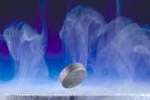
Superconductivity
Exactly 100 years ago, a Dutch physicist called Heike Kamerlingh Onnes and his team made a remarkable and completely unexpected discovery.
They found that certain metals completely lose their electrical resistance when cooled to within a few degrees of absolute zero.
A coil of wire made from such a metal could carry an electrical current forever, without needing a constant power source.
No one had predicted this phenomenon and at the time no one could explain it.
The effect was named "superconductivity".
It took us more than half a century to figure out how superconductivity might work and how to make it useful...

Exactly 100 years ago, a Dutch physicist called Heike Kamerlingh Onnes and his team made a remarkable and completely unexpected discovery.
They found that certain metals completely lose their electrical resistance when cooled to within a few degrees of absolute zero.
A coil of wire made from such a metal could carry an electrical current forever, without needing a constant power source.
No one had predicted this phenomenon and at the time no one could explain it.
The effect was named "superconductivity".
It took us more than half a century to figure out how superconductivity might work and how to make it useful.
More recently, though, we have come to realise that we understand the phenomenon far less well than we thought.
|
|

Supravodljivost
Prije točno 100 godina, nizozemski fizičar po imenu Heike Kamerlingh Onnes i njegov tim postigli su izvanredno i posve neočekivano otkriće.
Otkrili su da određeni metali u potpunosti gube svoj električni otpor kada ih se ohladi na temperaturu unutar nekoliko stupnjeva od apsolutne nule.
Zavojnica od žice izrađene od takvog metala mogla bi provoditi struju zauvijek, bez potrebe za stalnim izvorom energije.
Nitko nije predvidio taj fenomen i u to ga vrijeme nitko nije mogao objasniti.
Efekt je dobio naziv "supravodljivost".
Bilo nam je potrebno više od pola stoljeća kako bismo shvatili način na koji supravodljivost funkcionira i kako je možemo učiniti korisnom...

Prije točno 100 godina, nizozemski fizičar po imenu Heike Kamerlingh Onnes i njegov tim postigli su izvanredno i posve neočekivano otkriće.
Otkrili su da određeni metali u potpunosti gube svoj električni otpor kada ih se ohladi na temperaturu unutar nekoliko stupnjeva od apsolutne nule.
Zavojnica od žice izrađene od takvog metala mogla bi provoditi struju zauvijek, bez potrebe za stalnim izvorom energije.
Nitko nije predvidio taj fenomen i u to ga vrijeme nitko nije mogao objasniti.
Efekt je dobio naziv "supravodljivost".
Bilo nam je potrebno više od pola stoljeća kako bismo shvatili način na koji supravodljivost funkcionira i kako je možemo učiniti korisnom.
Pa ipak, u novije smo vrijeme počeli shvaćati da ovaj fenomen razumijemo daleko slabije nego što smo mislili.
|

The big discovery
Heike Kamerlingh Onnes spent most of his scientific career in the quest to achieve the lowest temperatures possible.
His big breakthrough came in 1908 when he managed to make liquid helium.
Helium requires temperatures as low as 4 degrees Kelvin above absolute zero to be liquefied.
Absolute zero is the lowest possible temperature, equivalent to 0 degrees Kelvin or -273.15 degrees Celsius.
Once he had the technology to achieve the lowest temperatures available, Kamerlingh Onnes started exploring how matter behaves at low temperature.
One of the questions he wanted to answer was how the electrical resistance of a metal changes as it approaches absolute zero.
Experiments had shown that resistance falls with temperature, but what happens when it gets really cold?..

|
|

Veliko otkriće
Heike Kamerlingh Onnes proveo je najveći dio svoje znanstvene karijere u potrazi za postizanjem najnižih mogućih temperatura.
Postigao je veliki uspjeh 1908. godine, kada je uspio proizvesti tekući helij.
Za pretvaranje helija u tekućinu potrebne su temperature od svega 4 stupnjeva Kelvina iznad apsolutne nule.
Apsolutna nula je najniža moguća temperatura i odgovara temperaturi od 0 stupnjeva Kelvina ili -273,15 stupnjeva Celzija.
Jednom kad je imao tehnologiju za postizanje najnižih mogućih temperatura, Kamerlingh Onnes je počeo istraživati kako se tvari ponašaju na niskim temperaturama.
Jedno od pitanja na koje je želio odgovoriti bilo je na koji se način električni otpor metala mijenja dok se temperatura približava apsolutnoj nuli.
Eksperimenti su pokazali da otpor pada zajedno s temperaturom, no što se događa kada postane zaista hladno?..

|

High-temperature superconductors
Fifty years after its discovery, superconductivity had been found in a number of metals and alloys.
No one expected to see the effect in an oxide.
Oxidation means rust - something scientists working with metals generally don't want.
Yet in the late 1960s, superconductivity turned up in strontium titanate, cooled to below 1 degree Kelvin.
Alex Muller from IBM's research laboratory in Zurich, Switzerland, was one of very few people to think that this discovery heralded an exciting new possibility.
He and his colleague, Georg Bednorz, started preparing various oxides and studying them.
The success came when the pair spotted a report from a French research group on an oxide compound containing barium, lanthanum and copper...

|
|

Supravodiči za visoke temperature
Pedeset godina nakon njenog otkrića, supravodljivost je otkrivena u brojnim metalima i legurama.
Nitko nije očekivao da će ovaj efekt biti uočen i kod oksida.
Oksidacija znači hrđanje - a to je nešto što znanstvenici koji rade s metalima općenito ne žele.
Pa ipak, kasnih se 1960-tih godina supravodljivost pojavila kod stroncijevog titanata, ohlađenog ispod 1 stupnja Kelvina.
Alex Muller iz IBM-ovog istraživačkog laboratorija u Zurichu u Švicarskoj bio je jedan od rijetkih ljudi koji su pomislili kako je ovo otkriće nagovještaj novih uzbudljivih mogućnosti.
On i njegov kolega, Georg Bednorz, započeli su pripremati različite okside i proučavati ih.
Uspjeh je stigao kada je par uočio izvješće francuske grupe istraživača o spoju oksida koji je sadržavao barij, lantan i bakar...

|
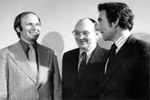
The theory of Bardeen, Cooper and Schrieffer
The most important discovery in understanding superconductivity near absolute zero came in 1957 from the work of John Bardeen, Leon Cooper and Robert Schrieffer.
Bardeen already had one Nobel Prize in physics for his part in the invention of the transistor, and the work on superconductivity would earn him his second, shared with Cooper and Schrieffer.
The ideas they worked on together are now known as BCS theory and provide a description of the superconducting state in terms of interactions between pairs of electrons.
Because they have the same negative charge, electrons tend to repel each other, but this can change in certain materials that have a crystal lattice.
The lattice vibrates with more or less energy depending on the temperature...

|
|

Bardeenova, Cooperova i Schriefferova teorija
Najvažnije otkriće za razumijevanje supravodljivosti na temperaturama blizu apsolutne nule stiglo je 1957. godine iz rada Johna Bardeena, Leona Coopera i Roberta Schrieffera.
Bardeen je već imao jednu Nobelovu nagradu za fiziku za sudjelovanje u izumu tranzistora, a rad na supravodljivosti donio bi mu i drugu, koju bi podijelio s Cooperom i Schriefferom.
Ideje na kojima su zajedno radili sada su poznate kao BCS teorija i daju opis supravodljivog stanja u smislu interakcije između parova elektrona.
Budući da imaju isti negativan naboj, elektroni imaju tendenciju odbijati se međusobno, ali se to može promijeniti u određenim materijalima koji imaju kristalnu rešetku.
Rešetka vibrira s više ili manje energije, ovisno o temperaturi...

|

New applications
Superconductors have such remarkable properties that they find many diverse applications.
Magnetically levitated (maglev) trains, for example, exploit a superconductor's ability to repel magnetic fields.
At the Yamanashi test line in Japan, a superconducting coil attached to the train keeps it floating above the magnetized track thus avoiding friction.
The train has reached a top speed of 581 km/h - making it the fastest land-based transportation system in the world.
The properties of superconductors have led to novel energy storage systems.
One is based on a large flywheel driven to high speeds by electricity during the night when it is cheaper.
The flywheel has frictionless superconducting bearings, so it doesn't lose its stock of rotational kinetic energy.
As a result it can store energy until it is needed...

|
|

Nove primjene
Supravodiči imaju toliko izvanredna svojstva da pronalaze mnogo različitih primjena.
Magnetski levitirani (maglev) vlakovi, na primjer, koriste sposobnost supravodiča da odbija magnetska polja.
Na probnoj liniji Yamanashi u Japanu, supravodljiva zavojnica pričvršćena na vlak drži ga u lebdećem položaju iznad magnetizirane pruge čime se izbjegava trenje.
Vlak je postigao najveću brzinu od 581 km/h - što ga čini najbržim kopnenim transportnim sustavom na svijetu.
Svojstva supravodiča dovela su do novih sustava za pohranu energije.
Jedan se temelji na velikom zamašnjaku kojeg se dovodi do velike brzine uz pomoć električne energije tijekom noći kada je energija jeftinija.
Zamašnjak ima supravodljive ležajeve bez trenja, tako da ne gubi zalihu rotacijske kinetičke energije.
Kao rezultat toga može pohraniti energiju sve dok ona ne bude potrebna...

|
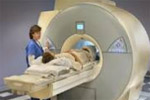
A look inside the human body
Heike Kamerlingh Onnes realised that one of the most important applications of superconductors would be in making powerful electromagnets.
Superconducting wire can carry immense electrical currents with no heating, which allows it to generate large magnetic fields.
An electromagnet with non-superconducting copper windings would melt in same conditions.
Unfortunately, the superconductors available to Kamerlingh Onnes could only carry small currents producing correspondingly small magnetic fields and so he never realised this possibility in his lifetime...

|
|

Pogled u unutrašnjost ljudskog tijela
Heike Kamerlingh Onnes je shvatio da bi jedna od najvažnijih primjena za supravodiče mogla biti izrada snažnih elektromagneta.
Supravodljiva žica može provoditi vrlo jake električne struje bez zagrijavanja, što joj omogućuje generiranje velikih magnetskih polja.
Elektromagnet s bakrenim namotajima koji nisu supravodljivi u istim bi se uvjetima rastopio.
Nažalost, supravodiči koji su Kamerlinghu Onnesu bili dostupni mogli su provoditi samo male struje i proizvoditi odgovarajuće mala magnetska polja i zbog toga on nikada nije shvatio ovu mogućnost za vrijeme svog života...

|
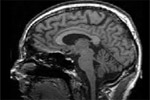
Superconductivity in MRI scanners
In an MRI scanner, a superconducting magnet provides the magnetic field that starts the nuclei precessing.
To produce high-resolution images typically requires a field between 1 and 3 tesla, tens of thousands of times larger than the magnetic field at the Earth's surface.
The magnet also needs to be large enough for a person to fit inside.
High-resolution 3D images of the body are accomplished using a sophisticated sequence of electromagnetic pulses and a magnetic field gradient - techniques that won the British physicist Peter Mansfield and American chemist Paul Lauterbur the Nobel prize for medicine in 2003.
There are several variants of MRI today, including functional MRI that monitors processes such as blood flow in the brain in response to particular stimuli...

|
|

Supravodljivost kod skenera magnetne rezonance
Kod skenera magnetne rezonance, supravodljivi magnet proizvodi magnetsko polje koje počinje pomicati jezgre.
Za izradu slike visoke razlučivosti obično je potrebno polje jakosti između 1 i 3 Tesle, što je nekoliko desetaka tisuća puta više od magnetskog polja na površini Zemlje.
Magnet također treba biti dovoljno velik kako bi osoba mogla stati u njega.
3D slike tijela visoke razlučivosti postižu se pomoću sofisticiranog niza elektromagnetskih impulsa i gradijenta magnetskog polja - tehnika za čije su otkriće britanski fizičar Peter Mansfield i američki kemičar Paul Lauterbur dobili Nobelovu nagradu za medicinu 2003. godine.
Danas postoji nekoliko varijanti skenera magnetne rezonance, uključujući i funkcionalan skener magnetne rezonance, koji prati procese poput protoka krvi u mozgu kao rezultat odgovora na određene podražaje...

|
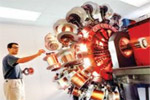
Superconductivity 100 years later
A century after the discovery of superconductivity what have we learned?
One big lesson is that the time from the discovery of a phenomenon to important applications is long.
It took 50 years to work out how to make a superconducting magnet and half as much time again to develop its first application in practice.
Superconducting materials are still surprising us...

|
|

Supravodljivost 100 godina kasnije
Što smo naučili poslije jednog stoljeća nakon otkrića supravodljivosti?
Jedna velika pouka je da od otkrića fenomena do važnih primjena u praksi može proći mnogo vremena.
Bilo nam je potrebno 50 godina kako bismo otkrili na koji je način moguće izraditi supravodljivi magnet i još upola toliko vremena za njegovu prvu primjenu u praksi.
Supravodljivi nas materijali i dalje iznenađuju...

|




